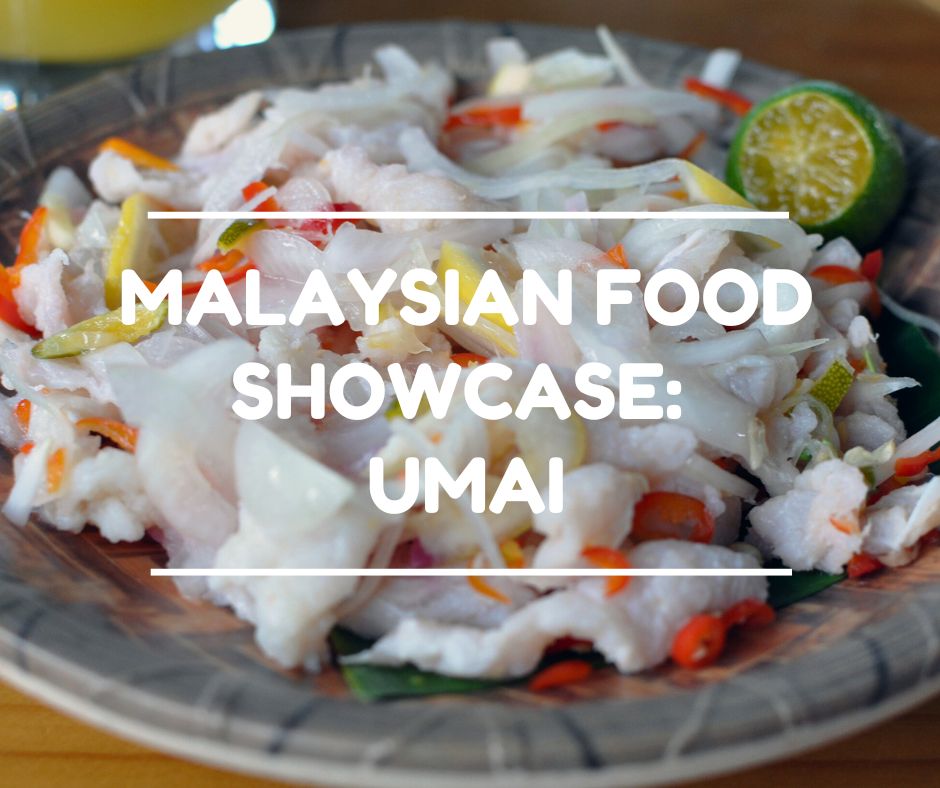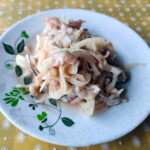Umai: The Traditional Raw Fish Salad of Sarawak
If ceviche belongs to Peru and sashimi to Japan, then Sarawak proudly claims Umai. It is the tangy, zesty raw seafood salad that hails from Mukah, the heartland of the Melanau community in Sarawak. In the Melanau language, the word “umai” literally means food to line the stomach.
Umai’s story begins at sea. Melanau fishermen working from wooden boats needed a safe way to prepare food without flame, so they relied on the acidic citrus juice to “cook” the catch, then flavoured it with aromatics like onions, ginger, chillies and salt. What started as a practical method of preservation turned into a local delicacy. Umai moved from boats to markets to restaurants, and today it has become an emblem of Melanau taste carried with pride across Sarawak.
Preparation of Umai is quick but deliberate. Fresh fish, often empirang, red snapper, or pomfret, is cleaned, filleted, and sliced thin enough to almost melt on the tongue. The slices are “cooked” in sharp acidic tang of calamansi lime and mixed with shallots, chillies and ginger. Salt balances the sourness, and a final scattering of sliced onions crowns the dish. Every family swears by their own recipe, some adding depth with torch ginger, some making it fruitier using asam payak (sour swamp palm fruit), and some introducing funkiness by adding belacan. The heart of Umai remains unchanged, simplicity, freshness, and balance. When it comes the time to eat, some prefer it straight from the mixing bowl, while others let it rest in the chiller for a refreshing coolness. The traditional way? Pair it with Melanau sago and sip hot tea while the evening breeze rolls in.
Today, Mukah’s fish market is still the pilgrimage spot for Umai lovers, with stalls serving it minutes after the fish is landed. You can watch vendors slice and prepare umai on the spot. Its short shelf-life is part of the truth here. Umai does not travel well and rarely suits mass distribution, which is why eating it close to the source matters.
Restaurants that champion Sarawakian and Melanau cuisines have started putting it on the menu, and home cooks still make it for lunch on ordinary days and for crowds during harvest festival. You will see variations everywhere. Umai Campur mixes seafood and seasoning together for a bold, all-in bite. Umai Cicah separates them so you dip to your own liking. Beyond fish there is Umai Obor-obor (jellyfish) for that springy snap, Umai Udang (prawns)/Bubuk (tiny shrimps) for natural sweetness, Umai Ikan Yu (shark) for those who prefer a firmer chew, and even Umai Kaki Manuk (boneless chicken feet) for that high collagen crunch.
A quick side note helps with confusion. People often compare Umai to Hinava from Sabah’s Kadazandusun community. Both are raw seafood salads, cousins rather than twins. Hinava regularly includes grated bambangan (wild mango) seed, which gives a deeper, fruit-wood aroma, while Umai keeps closer to the clean push and pull of citrus, chillies, shallots, and sometimes belacan.
If you are traveling in Sarawak, make time for Mukah and taste Umai near the water where it was born. Somehow eating it by the coast or river makes the citrus taste brighter and the fish taste even fresher.





